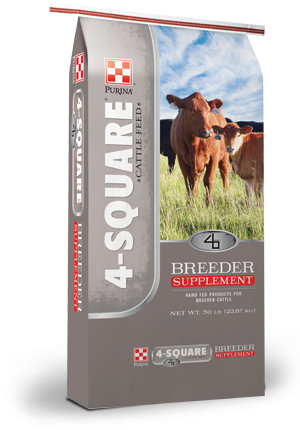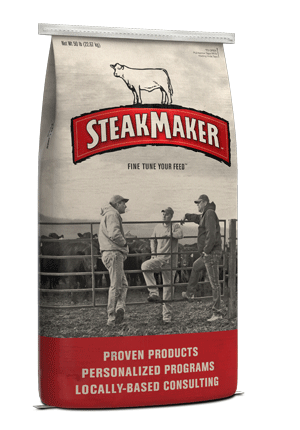
How To: Adjust Rations When Distillers’ Grains are in Short Supply
Management : Cow & Calf
Management : Grower & Finisher
Nutrition : Supplements

Consider these distillers’ grains alternatives.
Distillers’ grains have become a significant feed ingredient for cattle producers across the country in the past few decades – and with good reason. Wet and dried distillers’ grains are excellent sources of protein and energy while increasing ration palatability.
However, this year, coronavirus has not only impacted cattle markets, causing shifts in feeding strategy, but it has also reduced ethanol production, causing reduced availability of distillers’ grains.
The scenario we’re in might have some producers asking how we can feed cattle without wet or dried distillers’ grains. For many, we can simply feed more corn to replace energy, but we also need to find a replacement for the protein that is lost by not having distillers’ grains.
Cost of gain will be a major consideration for any ration change.
Another option to economically improve protein levels is to add urea to the ration. Feed grade urea is around 46% nitrogen, which is equivalent to 287% crude protein from non-protein nitrogen, so it is an inexpensive protein source. However, there is one urea caution.
Watch how much feed grade urea you put into the ration because it can become toxic at high levels. A rule of thumb is to limit the amount of feed grade urea in rations to no more than 1% on a dry matter basis.
If you don’t want to worry about balancing rations for finishing cattle, you can use a complete supplement. A 40-20 supplement, like Purina® SteakMaker® Feeds, gives you flexibility when feeding corn and available roughages.
If you have cows and you typically handfeed a ration with distillers’ grains, you can adjust to feeding a supplement. Purina® 4-Square® Breeder Cubes are an ideal option because they help balance the nutrition of deficient forages.
With the cubes, you can feed cows 1 to 3 pounds per day, similar to what you might have done with distillers’ grains, and it will offer a more complete diet.
Cattle should also have access to a free-choice mineral, like Purina® Wind and Rain® Mineral, to ensure they receive adequate nutrition.
For instance, if you have access to good forage for your cows, consider transitioning to self-fed Purina® Accuration® Supplements – available in liquid, tub or bulk feed form. Accuration® Supplements have Intake Modifying Technology®, which encourages snack-eating and aids cattle in performing to their potential on forage.
Switching to a self-fed system isn’t cost-prohibitive when you look at the expense you save in labor. You won’t be spending the same amount of time physically feeding cattle, so time and labor savings can be spent on other facets of the business.
If you have grass available for calves, you can graze them until you reach a better marketing window. You could also help calves gain weight as feeders by providing supplemental nutrition, such as mixing cracked or rolled corn with Purina® Accuration® Grower.
Most years we can raise calves to 800-900 pounds and still make decent profits. But, once cattle reach 1,000 pounds, consider retaining ownership in the feedlot for the best return on investment.
The bottom line? There are always going to be factors that impact cattle markets and commodity supplies and prices. Your ability to stay flexible, pivot and make timely decisions will define your success.
Does your nutrition program stack up? Find out with a Proof Pays trial.
Distillers’ grains have become a significant feed ingredient for cattle producers across the country in the past few decades – and with good reason. Wet and dried distillers’ grains are excellent sources of protein and energy while increasing ration palatability.
However, this year, coronavirus has not only impacted cattle markets, causing shifts in feeding strategy, but it has also reduced ethanol production, causing reduced availability of distillers’ grains.
The scenario we’re in might have some producers asking how we can feed cattle without wet or dried distillers’ grains. For many, we can simply feed more corn to replace energy, but we also need to find a replacement for the protein that is lost by not having distillers’ grains.
Feedstuffs to consider
If you’re faced with needing to replace distillers’ grains, some alternatives to consider include:- Soybean meal
- Canola meal
- Sunflower seed meal
- Gluten feed
Cost of gain will be a major consideration for any ration change.
Another option to economically improve protein levels is to add urea to the ration. Feed grade urea is around 46% nitrogen, which is equivalent to 287% crude protein from non-protein nitrogen, so it is an inexpensive protein source. However, there is one urea caution.
Watch how much feed grade urea you put into the ration because it can become toxic at high levels. A rule of thumb is to limit the amount of feed grade urea in rations to no more than 1% on a dry matter basis.
What could a basic ration look like?
For a growing ration in feeder cattle, an economical option is using cracked or rolled corn. You could use whole corn to lower costs, but you may sacrifice some energy and efficiency by doing so. Once you have the right balance of corn, you can add urea to help increase the overall protein.If you don’t want to worry about balancing rations for finishing cattle, you can use a complete supplement. A 40-20 supplement, like Purina® SteakMaker® Feeds, gives you flexibility when feeding corn and available roughages.
If you have cows and you typically handfeed a ration with distillers’ grains, you can adjust to feeding a supplement. Purina® 4-Square® Breeder Cubes are an ideal option because they help balance the nutrition of deficient forages.
With the cubes, you can feed cows 1 to 3 pounds per day, similar to what you might have done with distillers’ grains, and it will offer a more complete diet.
Cattle should also have access to a free-choice mineral, like Purina® Wind and Rain® Mineral, to ensure they receive adequate nutrition.
Shifting to self-fed rations
The lack of available wet and dried distillers’ grains also presents an opportunity to reevaluate your overall feeding program.For instance, if you have access to good forage for your cows, consider transitioning to self-fed Purina® Accuration® Supplements – available in liquid, tub or bulk feed form. Accuration® Supplements have Intake Modifying Technology®, which encourages snack-eating and aids cattle in performing to their potential on forage.
Switching to a self-fed system isn’t cost-prohibitive when you look at the expense you save in labor. You won’t be spending the same amount of time physically feeding cattle, so time and labor savings can be spent on other facets of the business.
Balancing nutrition and markets
Keep your overall cattle marketing goals top of mind. That may ultimately drive how you adjust your ration – especially when markets are volatile.If you have grass available for calves, you can graze them until you reach a better marketing window. You could also help calves gain weight as feeders by providing supplemental nutrition, such as mixing cracked or rolled corn with Purina® Accuration® Grower.
Most years we can raise calves to 800-900 pounds and still make decent profits. But, once cattle reach 1,000 pounds, consider retaining ownership in the feedlot for the best return on investment.
The bottom line? There are always going to be factors that impact cattle markets and commodity supplies and prices. Your ability to stay flexible, pivot and make timely decisions will define your success.
Does your nutrition program stack up? Find out with a Proof Pays trial.



